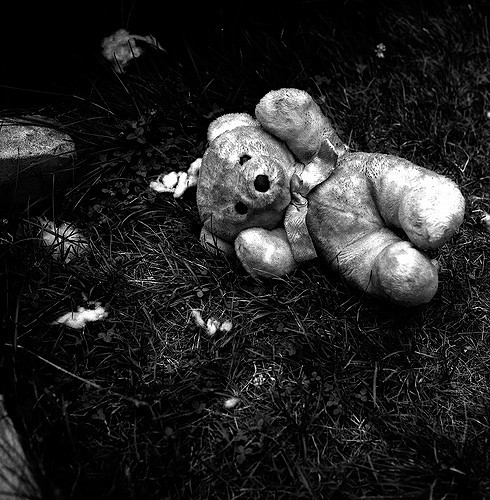
A moment of inattention or even overconfidence can be enough for one of the family’s worst, and often never-ending, nightmares to come to pass. The disappearance of children and adolescents is a sad reality for at least 40,000 mothers and fathers in Brazil each year, according to official figures. This number could be even higher due to the lack of information from family members who don’t always report the disappearance.
In 2010, the Secretariat of Human Rights of the Presidency of the Republic, in partnership with the Ministry of Justice, created the National Registry of Missing Children and Adolescents on the internet to try to unify the reporting, consultation and dissemination of disappearances in Brazil. But in 2016 the registry had only 370 cases recorded in 20 states. To try to change this situation, there is a bill (4509/2016) in the Chamber of Deputies, by Federal Deputy Laura Carneiro (PMDB/Rio de Janeiro), which proposes regulation of the registry in the Child and Adolescent Statute. It also requires immediate reporting to the registry of disappearances recorded by competent bodies, not only public institutions, but also institutions of organized society. Today, registration is not mandatory. The bill is awaiting an opinion of the Reporting Judge in the Social Security and Family Commission (CSSF).
Simultaneously, other initiatives based on technology are also trying to support the search for missing boys and girls. This is the case of the Projeto Caminho de Volta (Way Back Project) created in 2004 by the Medical School of the University of São Paulo with the Secretariat of Public Security of São Paulo. The project is a pioneer in Brazil and has a DNA database where the genetic profiles of family members who have lost their children are stored, allowing comparison with data from children or adolescents found whose parents are not known. The resource is used when visual recognition is not possible, either due to the time of the disappearance or other circumstances.

Project coordinator Prof. Dr. Gilka J. F. Gattás provides an example of the importance of the database: “After seven years living in a shelter and without knowledge of her parents, a hearing-impaired child, lost when she was still small, could only be located thanks to the initiative of a judge who referred the case to the project. The mother was in the Projeto Caminho de Volta (Way Back Project) database, allowing identification of the child.” To be part of the project, fathers and mothers who have missing children younger than 18 years of age only need to have a police report – the date of disappearance is not important. The service is completely free.
As in the case of trying to create a National Registry of Missing Children and Adolescents, the effectiveness of the DNA database depends on the effective participation of all those involved in cases of missing children, such as police and judges, since they need to send the children’s data to the database. For Dr. Gilka, the work on a national network is essential for effective location. “The major bottleneck for a project like this is not what we are proposing to offer, but unification of information,” she says.
Member of a São Paulo state government commission created to discuss the topic, the coordinator notes the need to work on disappearances in a more coordinated way. “A missing child can be in the street, may have run away from home, may be exploited for labor or sex or be assisted in some way in shelters without anyone ever having checked to see if he/she is a missing child. Today, there is no process that requires the police or a judge to send information on a disappearance to the database,” warns Dr. Gilka.
In addition to the DNA database, the project also is supported by the work of volunteer psychologists who listen to family members of missing children at the time they make the police report at the 4th Police Office for Missing Persons in São Paulo. Data collected for the project from families show that 85% of cases of missing children involve runaways that often result from family conflicts and that adolescent girls, from 12 to 14 years of age, disappear most. More than half of the disappearances of these children are recurring.
The adolescents found are also interviewed by the project. “The idea is to collect information on their disappearance. To learn where they were, how they survived and the reason for running away,” says the coordinator of the Projeto Caminho de Volta (Way Back Project) psychologists, Dr. Cláudia Garcia. Whenever necessary, both the adolescent and the family members are referred for psychological assistance or psychiatric evaluation. Six months after the referral, the psychologist who first assisted contacts the family to check on the case.
“We work with a portion of the population that has access to almost nothing. Often, the conversation with the psychologist is the first opportunity the families have to be heard in a nonjudgmental manner, without criticism,” says Dr. Cláudia. According to her, there is enthusiastic involvement in the project and the families not only show up for the return visit, but want to continue being assisted in the future. In these cases, they are referred to institutions close to their residences.
The Civil Police of the State of Rio de Janeiro has a computer program capable of creating aged images of children missing from past years. Dissemination of the photos is made via the internet. It is an initiative of the Police Station to Discover Whereabouts. Created in 2014 to investigate cases of disappearances in the municipality of Rio de Janeiro, it has a specific investigation unit for cases of missing children and adolescents.
Health professionals have also joined the fight to help and locate missing children. Recently the Federal Medical Council advised doctors and pediatricians to quickly report to the competent bodies whenever they notice some suspect behavior when assisting babies or children. Difficult interaction between supposed parents and a child could be an indication of a possible kidnapping, for example.
In the case of disappearance of a family member, anyone can immediately go to the closest police station and register the disappearance by means of a police report. It is important to remember that in these types of situations it is not necessary to wait 24 or 48 hours. Registration is immediate.

Illegal adoption, human trafficking, sale of organs, prostitution and child labor are some of the main causes of child disappearances in Brazil. And preventing this from occurring is still, no doubt, the most effective course of action. Therefore, in our Afeto e Proteção (Affection and Protection) project we emphasize the importance of family and provide important prevention tips that need to always be kept in mind:
- Never leave babies or small children with strangers if you need to use public bathrooms;
- Small children need to be constantly watched, mainly in public places, since they like to run, play by hiding, etc. Teach them that they can lose their parents and even be taken by strangers;
- In public places, teach your child to identify security officers or guards to ask for help if they get lost;
- Teach your children to be polite, but not be foolish! They should not accept candy, gifts, invitations from strangers without a parent being present;
- Children and adolescents can run away from home for a variety of reasons, including adventure! Teach your child from an early age that limits are good and necessary! Do not be afraid of exercising your responsibility as father or mother, but remember that it is not necessary to use physical or verbal violence to educate and develop good citizens;
- Remember that you were also an adolescent and understand that it is natural for conflicts to exist between parents and their children due to curfews, boyfriends or girlfriends, friendships, school, etc. Thus, before imposing your will or rules, try creative alternatives to create a family environment that is more attractive than the street;
- Teach your children to ask for your help if they need to build a relation of trust with you. This is the best way to prevent a disappearance.
